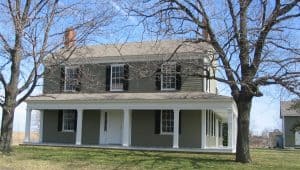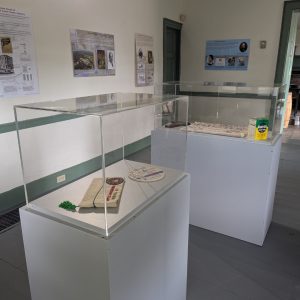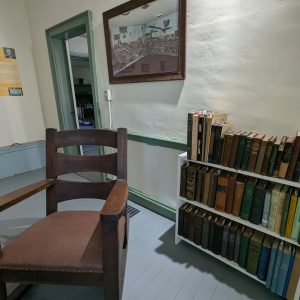How Do You Solve A Problem Like Johnston House?
By Kerry Lippincott, Executive, Director
Built by Scotch immigrant John Johnston in 1822, the Johnston House is located on the original land where Johnston became a well-known advocate of improved farming techniques. He was the first farmer in the United States to use drain tiles to increase productivity on his farm, and it became one of the most famous farms in 19th-century America. The house remained a private home until 1990. In 1991 Historic Geneva purchased the house along with 1.4 acres of land and it became part of the Rose Hill Mansion Complex. There is a connection between Rose Hill and Johnston House. The Swan family lived at Rose Hill from 1850 to 1890. Prior to owning Rose Hill, Robert Swan was trained to be a farmer by Johnston. Based on his training Robert was able to turn Rose Hill into a more productive and profitable farm. Robert also married Margaret Johnston, one of Johnston’s daughters. Together the properties tell the story of life in the Finger Lakes during the 19th century. The house was restored and opened as a museum in 1994. Since acquiring Johnston House, we have, however, struggled with how to adequately use the site.
The Johnston House first served as a drain tile museum. In 1992 we received 350 drain tiles, tiling tools, and research materials from Mike Weaver, a civil engineer who researched and wrote about the history of tile drainage. By 2008 the drain tile collection was moved to another building on the site (now the Mike Weaver Drain Tile Museum), and the house was reinterpreted to reflect life on a mid-nineteenth-century farm. Between 2017 and 2018 more changes were made to the house’s interpretation. While three spaces remained furnished period rooms, exhibits on technology and innovation, immigration, and agriculture (which connected to the Johnston family’s experiences with the region) were installed in the remaining rooms. Until 2019 the Johnston House and Mike Weaver Drain Tile Museum were open on weekends from May to October. School programs were also held onsite in the spring.
Due to pandemic restrictions Johnston House was closed to the public in 2020 and 2021. It has remained closed as we determine how to best use the site. Between 2021 and early 2024, we worked with Beardsley Architects and Chrisanntha Construction to develop plans to convert Johnston House into a collections storage space. Our collections storage areas at the Geneva History Museum are at capacity and to better care for our collections we need to expand our storage. Johnston House seemed like a logical location. Unfortunately, due to the age of the house and the potential costs, the house cannot be converted into collections storage.
For over a year we have been working on another reinterpretation of the house, and the first floor of the house is open through October 31 by appointment. The kitchen is now an interactive tavern. To help make ends meet before the farm was successful, the Johnston family ran a tavern in their home in the 1820s. A new feature is the Weaver Research Room (formerly the North Parlor). In this space Mike Weaver’s office has been recreated, and his agricultural book collection is available to researchers. The remaining two rooms on the first floor are exhibit spaces. One space tells the story of the Johnston family and the house. The former South Parlor has been turned into a rotating exhibit space, and Geneva Innovators is now on display. Plans are underway to reinterpret spaces on the second floor, and the goal is to have it reopened to the public next year.
Along with reinterpretation, work also had to be inside and outside the house. With the house closed to the public for years, minimal maintenance work has been done. Renovations included the installation of modern electric heating and lighting, interior painting, stabilizing the first floor, window replacements, and repairs to the porch. A driveway behind the Drain Tile Museum has also been installed.
Historic Geneva is not the first history museum, nor will we be the last to struggle with how to use a site. One suggestion has been to “get rid of it” like we did Balmanno or turn it into another vacation rental. We hope to have Johnston House and the Drain Tile Museum open more regularly in the 2026 season, but for now appointments must be made to visit the house. Please call 315-789-5151 to make an appointment or to find out more information. Johnston House is a work in progress so I’m also open to suggestions on other possible uses for the site. If you have some ideas, please email me at director@historicgeneva.org.
This article was brought to you in part by our supporters. Be our partner in telling Geneva’s stories by becoming a Historic Geneva supporter.



